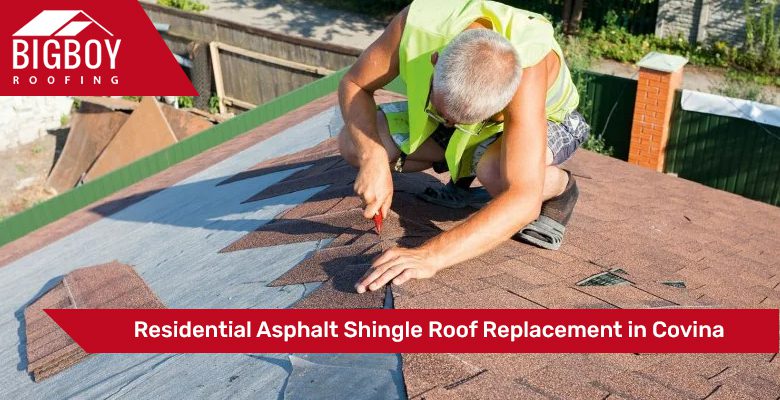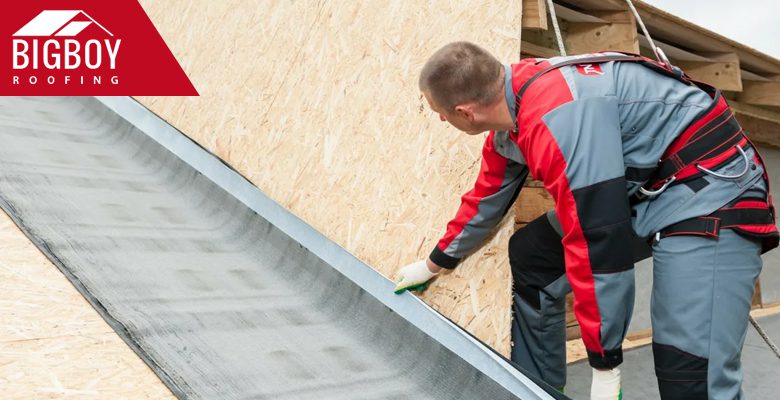Residential Asphalt Shingle Roof Replacement
Are you currently faced with the daunting task of getting a residential asphalt shingle roof replacement? We understand that replacing your roof can be overwhelming and even worrisome. However, worry no more!

In this blog post, we aim to with the necessary insights and guidance on navigating the process of getting a residential asphalt shingle roof replacement. We recognize the significance of a sturdy and reliable roof and are here to assist you in making informed decisions and finding the perfect solutions for your home.
Common Reasons for Residential Asphalt Shingle Roof Replacement
Here are common reasons for scheduling a residential asphalt shingle roof replacement with our team of roofing experts:
I. Age: Asphalt shingle roofs have a limited lifespan. Typically, they last between 20 to 30 years. As the roof ages, the shingles can become brittle, lose granules, and become more prone to damage and leaks.
II. Weather Damage: Severe weather conditions like storms, hail, high winds, and heavy rain can cause significant damage to asphalt shingles. This includes shingle lifting, cracking, curling, or missing shingles. Prolonged exposure to harsh weather can deteriorate the shingles and compromise the roof’s integrity.
III. Leaks and Water Damage: A roof with frequent leaks that cannot be effectively repaired may require replacement. If left unaddressed, water infiltration can lead to rot, mold growth, and structural damage.
IV. Poor Installation: Improper installation of the asphalt shingles can lead to premature failure and the need for replacement. Inadequate fastening, improper alignment, or incorrect nailing techniques can result in shingle movement, water penetration, and poor performance.
V. Insufficient Ventilation: Inadequate roof ventilation can cause heat and moisture to become trapped in the attic, leading to accelerated shingle deterioration. Excessive heat can cause the shingles to bake from the underside, leading to premature aging and reduced lifespan.
Causes of Residential Asphalt Shingle Roof Damage
Various factors can damage residential asphalt shingle roofs. Here are some common causes of damage to asphalt shingle roofs:
| Causes | Description |
| Impact damage | Falling branches, hail, or other objects can cause physical damage to asphalt shingles. Hailstones, in particular, can dent or crack the shingle surface, compromising its protective barrier. |
| Improper attic ventilation | Inadequate ventilation in the attic can hurt the health of the roof. Insufficient airflow can lead to excessive heat buildup, accelerating shingle deterioration. |
| Ice dams | In colder climates, ice dams can form on the roof edges. When the snow melts on the warmer sections of the roof and refreezes at the colder eaves, it creates a dam that prevents proper drainage. |
| Foot traffic and improper maintenance | Walking on the roof or performing maintenance tasks without proper precautions can cause damage to the shingles. |
How Is Residential Asphalt Shingle Roof Replacement Done?
Residential asphalt shingle roof replacement with our Covina roofing contractors typically involves the following steps:

I. Inspection and preparation: The first step is to assess the existing roof’s condition. Our expert roofing contractor will inspect the roof to determine if a replacement is necessary.
II. Roof deck inspection and repair: Once the old shingles are removed, the roof deck will be inspected for any signs of damage or rot. Any damaged deck sections will be repaired or replaced to ensure a solid and stable foundation for the new roof.
III. Installation of underlayment: A layer of underlayment, typically an asphalt-saturated felt or synthetic material, is installed over the roof deck. This underlayment acts as a moisture barrier and protects against water infiltration.
IV. Flashing installation: Flashing is metal or rubber material installed around roof penetrations, such as chimneys, skylights, and vents, to prevent water from seeping in. The flashing is carefully installed and secured to ensure a watertight seal.
V. Shingle installation: The new asphalt shingles are installed starting from the bottom of the roof and working upward. Each shingle is carefully aligned, nailed, or secured according to the manufacturer’s guidelines and overlaps the row below. This installation method ensures that water drains properly down the roof surface.
VI. Ridge vent installation: A ridge vent may be installed along the roof’s peak to improve attic ventilation. This allows for proper airflow and helps regulate temperature and moisture levels in the attic space.
VII. Vent pipe installation: Vent pipes used for plumbing or ventilation are fitted with appropriate pipe boots or flashing to ensure a weatherproof seal.
VIII. Cleanup and final touches: Once the shingles and necessary components are installed, the job site is thoroughly cleaned, and any debris or leftover materials are removed. The contractor will inspect the new roof to ensure everything is in place and meets the required standards.
Don’t delay; call our roofing experts today!
Our professionals will detect any underlying issues or potential risks and offer proactive solutions to maintain the integrity of your roof. Don’t let a deteriorating roof stress you out – call us today!
FAQs
How do I know if my asphalt shingle roof needs to be replaced?
Signs that your asphalt shingle roof may need a replacement include curling, cracking, missing shingles, water leaks, or significant granule loss. It’s best to have a professional roofing contractor assess the condition of your roof to make an accurate determination.
How long does an asphalt shingle roof typically last?
The lifespan of an asphalt shingle roof varies depending on factors such as the quality of materials, installation, climate, and maintenance. Generally, asphalt shingle roofs can last between 20 to 30 years.
Can I install new shingles over the existing ones?
In some cases, installing new shingles over the existing ones is possible. However, it’s important to consult a roofing professional to determine whether this option is viable for your roof. Factors such as local building codes, the existing roof’s condition, and the weight-bearing capacity must be considered.
What are the benefits of replacing my asphalt shingle roof?
Replacing your asphalt shingle roof can provide several benefits, including improved protection against leaks and water damage, enhanced energy efficiency, increased home value, better curb appeal, and peace of mind knowing that your roof is in good condition.
How long does replacing a residential asphalt shingle roof take?
The duration of a roof replacement project depends on the roof size.

